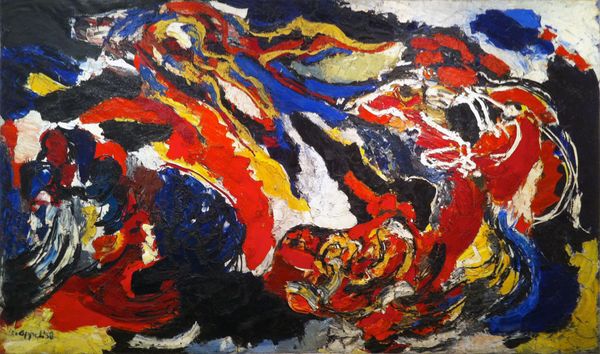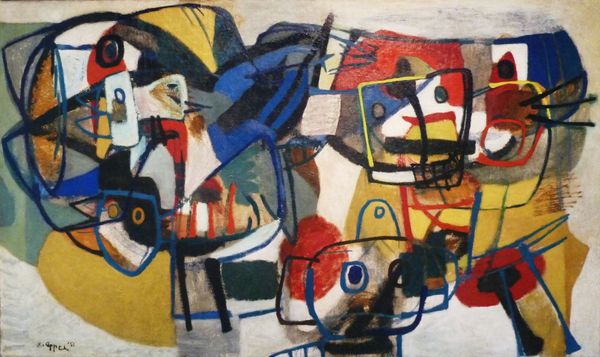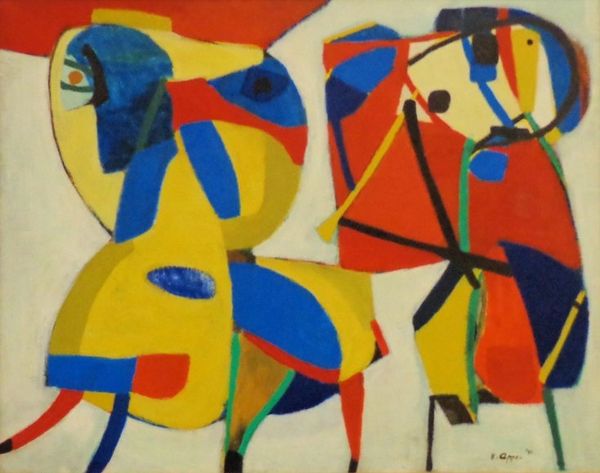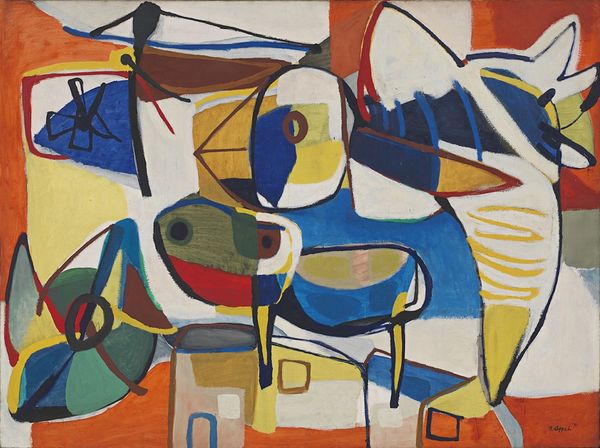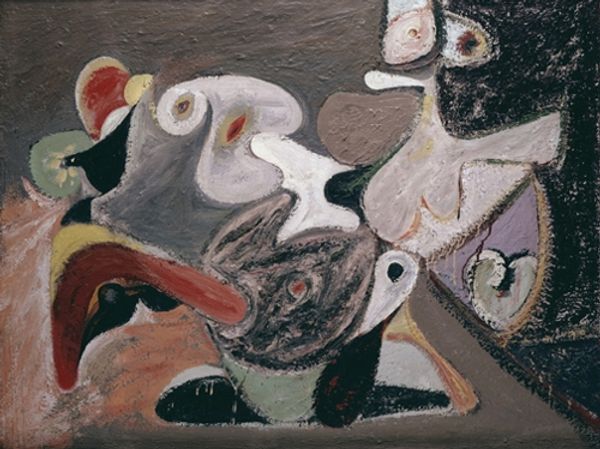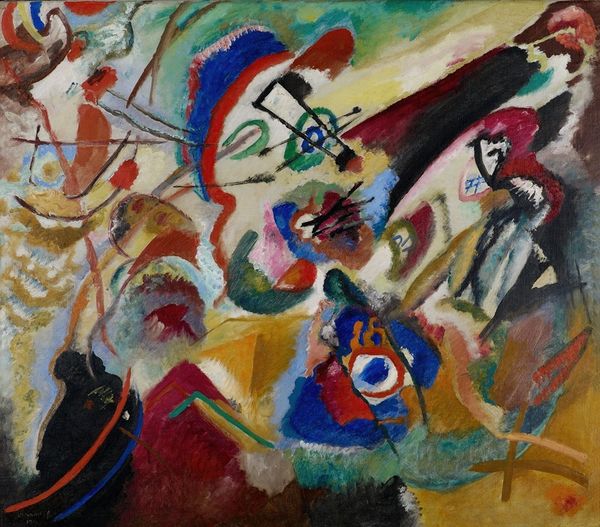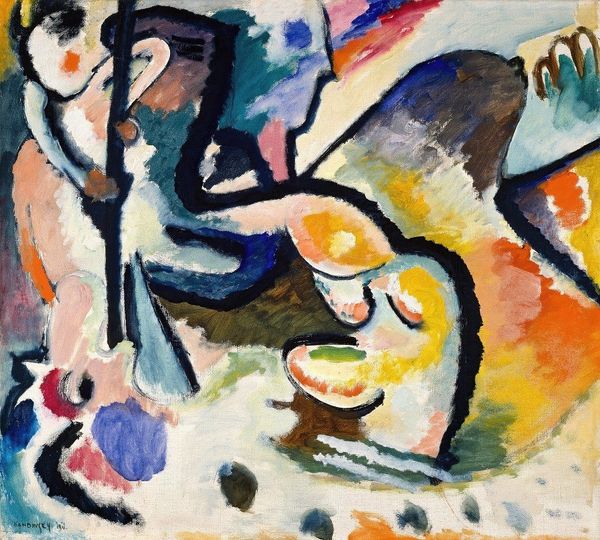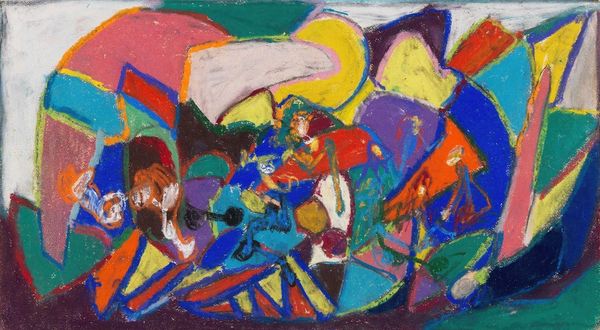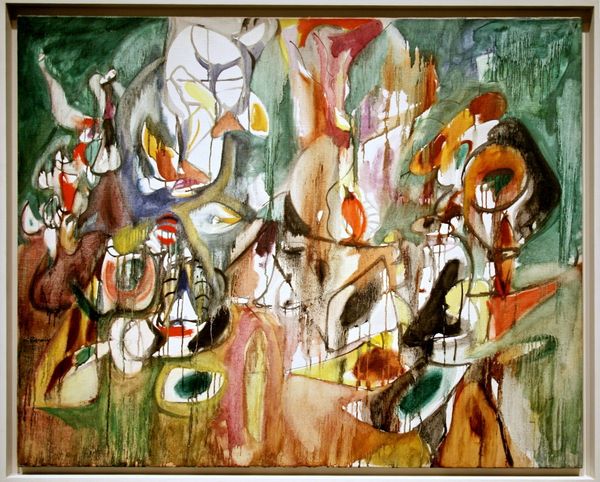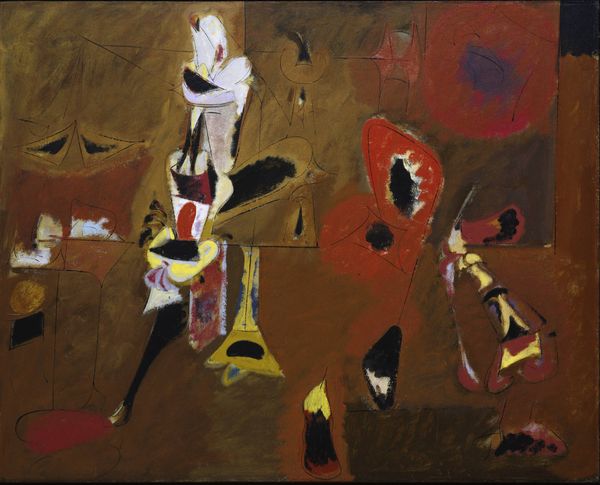
oil-paint
#
abstract-expressionism
#
abstract painting
#
oil-paint
#
landscape
#
abstraction
Copyright: Public domain
Editor: Arshile Gorky's "The Garden in Sochi," painted in 1943 with oil paint, is a captivating burst of color and amorphous shapes. At first glance, I'm struck by how dreamlike it is, a landscape of the subconscious. What do you see in this piece? Curator: Ah, yes, Gorky. To me, this painting sings of memory and longing, doesn't it? "The Garden in Sochi" isn’t a literal garden but a recall of the artist's childhood in Armenia, a place irrevocably lost. Do you notice how the biomorphic shapes intertwine, like half-remembered stories overlapping each other? Editor: I see that now, like the past bleeding into the present. There’s a vulnerability in those fluid forms, almost like they’re trying to hold onto something. Curator: Exactly. Gorky himself described these shapes as "organisms," capturing a sense of constant flux and transformation. The bold colors – the reds and yellows – they evoke a passionate intensity, yet there's also a melancholy, perhaps born of that inherent loss. It almost reminds me of a symphony slowly falling apart. What do you think of that? Editor: I love that comparison! It clicks. There’s definitely a feeling of something fading or disintegrating. Thinking about Gorky’s background, this piece suddenly feels more poignant. Curator: It’s a painting layered with personal history and artistic innovation. A window into the artist's soul, if you will, and a testament to the power of abstraction to convey deep emotion. Editor: It's amazing how much emotion is conveyed in such an abstract way. Thanks for shedding light on it. I see this painting with new eyes now.
Comments
No comments
Be the first to comment and join the conversation on the ultimate creative platform.
